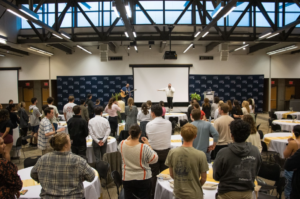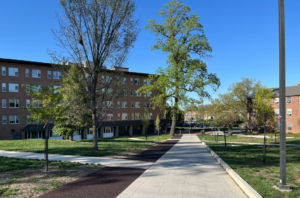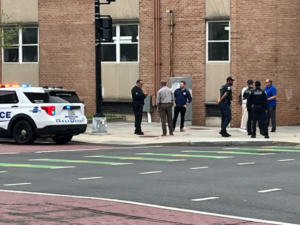First-Ever Maker Tech & Art Expo Held at Catholic U
By Katie Ward
Over the weekend the School of Engineering hosted the first-ever Maker Tech & Art expo, celebrating the open-source learning, manufacturing, and creativity that serve as the pillars of the global “Maker Movement” that inspired Maker Faires for almost fifteen years. The event was held on Saturday, September 14 in the Pryzbyla Great Rooms and was attended by dozens of artists, innovators, and creators in the D.C. metropolitan area, as well as students and faculty of the School of Engineering.
Organized by Dr. Sergio Picozzi, Visiting Assistant Professor of Materials Science and Engineering, the all-day event brought in 18 presenters from the D.C. area and attracted several hundred attendees. Promotion for the event described it as an “exciting, informative, and fun collaboration among technology and art makers” in D.C., and as a “learning and networking opportunity, featuring talented and creative visionaries that make things… showcasing transformational manufacturing technologies which are inspiring the global Maker Movement.”
According to the Maker Faires website, the launching of the Make magazine in 2005 prompted the events it describes as the “greatest show and tell on Earth” and provided “the catalyst for a tech-influenced DIY community that has come to be identified as the Maker Movement”.
Several tables at the event presented an art trade, including one which displayed charcoal portraits of significant historical Saudi Arabian politicians, and another which displayed 3D laser-etched and painted wood.
Most of the tables displayed developments in engineering and technology. 3D printing industry leader Markforged had a table displaying the company’s metal and carbon fiber 3D printing capabilities. Newport News Shipbuilding, the vendor for aircraft carriers and submarines for the U.S. Navy, and Danko Arlington, which creates 3D printed molds out of a sand polymer for the creation of vintage parts for the Navy, both had tables demonstrating their innovative technology.
“The Maker Movement is so important to engineers because it broadens their horizons,” Picozzi said. “Actually creating something enhances students’ imagination, creativity, versatility, even confidence. Computer tools are essential in the 21st century, but they shouldn’t be the only tools in an engineer’s tool box.”
One presenter displayed tiles created from ash emissions from coal-fueled power plants and from recycled cathode-ray tubes used in older televisions. The tiles, which were created in Catholic University’s own Vitreous State Laboratory (VSL) in Hannan Hall, are a way of creating functional materials from emissions and waste that would otherwise harm the environment.
Another table displayed a timeline of improvements to 3D-printable, open-source prosthetic hands from the Enabling the Future organization. The table was hosted by Maria Esquala, the president of the e-NABLE Alliance organization and the founder of APBLS (Alliance for Project Based Learning Solutions), a non-profit headquartered in Maryland which intends to install e-NABLE researching and testing curriculum in education.
Picozzi was happy with the outcome of the event and is confident that the engineering school will be hosting another one soon, and only hopes to increase the number of exhibitors in upcoming years.
“Catholic University is a great place to explore science, engineering, and innovation,” Picozzi said. “I’m happy to show that to students.”
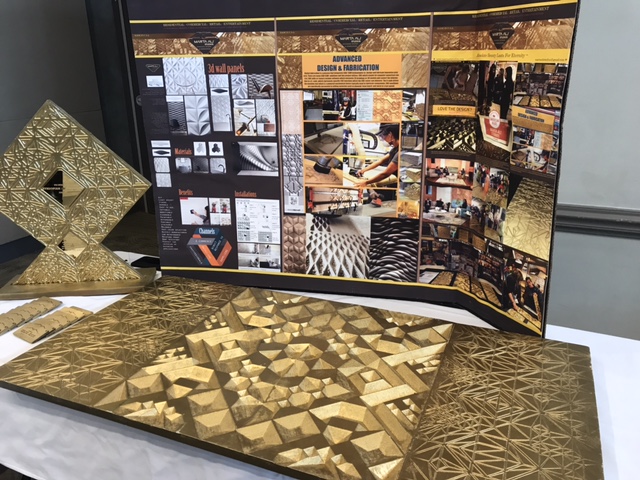
Laser-engraved wood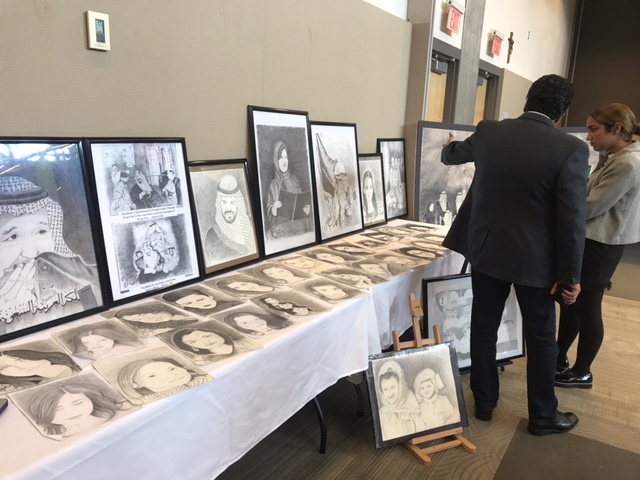
Saudi Arabian art display, charcoal medium
Tiles made from recycled ash emissions and old cathode ray tubes.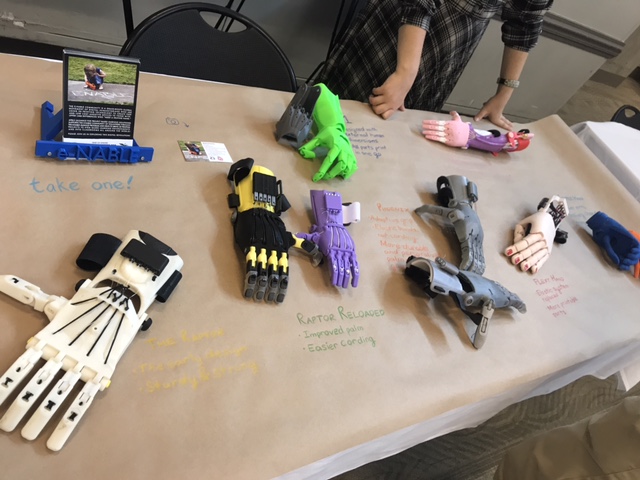
Enabling the Future’s timeline of 3D-printable prosthetic hand designs

